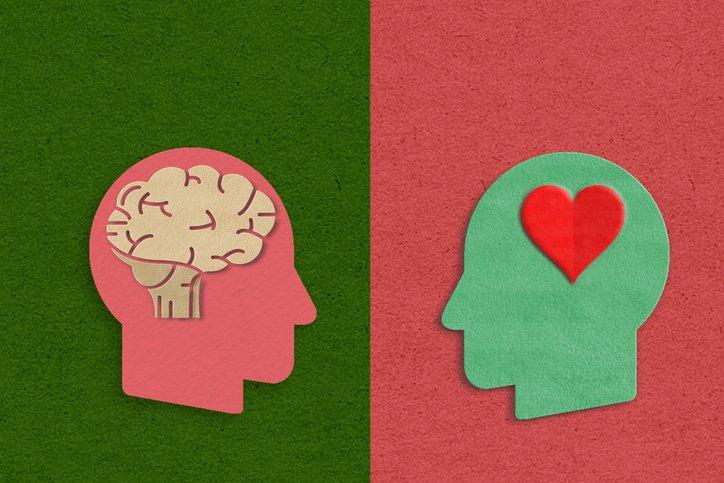
The challenge and opportunity of diversity, equity, inclusion, and justice often means asking ourselves: Can we change mindsets and behaviors to acknowledge, repair, and prevent systematic barriers and discrimination? Can we foster fairness, equity, and equality for all?
To achieve these goals, we need curiosity, open-mindedness, and the ability to suspend judgment and be a non-anxious presence. As we find ourselves in the midst of various “culture wars,” the stakes in society are high. We must recognize that the opposite of these characteristics (indifference, apathy, close-mindedness, impulsiveness, and anxiousness) can lead to organizational gridlock and dysfunction, extremism, and even violence.
But where do we start? How do we efficiently tackle such a complex task? It begins with preparing and equipping ourselves with the necessary tools for success. This preparation involves soothing and strengthening our minds, bodies, and relationships. I will share a tool I am using to make this work manageable and my goals attainable. I accept that progress in becoming a presence capable of bridging across polarized views is a bumpy journey, and personal development is an ongoing process.
Today’s society is highly polarized. For instance, in 2020, the Scholars Strategy Network published a report on polarization in the U.S. and its impact on democracy. The report revealed a significant increase in polarization in recent years, leading to a breakdown of democratic norms and institutions. Several factors have contributed to this rise, including partisan media, gerrymandering, political sorting, declining trust in institutions, and the growth of social media.
Many years ago, I suffered a heart attack. I have been battling heart disease since then, and I have learned that stress management is my number one task in managing my heart disease. I have found neurofeedback — a way of monitoring brain waves in real time and building training around desired brain activity — helpful for both my health and for enhancing attributes to address political polarization.
Neurofeedback
I began reading about neurofeedback to improve my stress management; to observe, reflect, and learn from my brain wave activities. Different brain wave frequencies are associated with various states of consciousness and cognitive processes. For example, neurofeedback can help individuals learn to increase their production of alpha brain waves, which are associated with relaxation and calmness. In 1998, Vanathy et al. conducted one of the most well-regarded studies on the benefits of neurofeedback for stress management. The study results showed that the neurofeedback group experienced significant reductions in anxiety, depression, and overall stress levels compared to the control group. They also showed improvement in their ability to focus and concentrate.
As I learned more about neurofeedback, I imagined its benefits for improving intercultural competence. Research suggests that different brain wave frequencies are associated with curiosity, open-mindedness, and suspending judgment.
- Curiosity is associated with gamma brain wave activity, a high-frequency brain wave related to cognitive processing, attention, and memory. When we are curious, our brain is highly active, and gamma waves participate in this process.
- Open-mindedness and adaptability are associated with alpha brain wave activity, a relaxed and receptive state of mind. Alpha waves are linked to a calm and focused consciousness, facilitating openness to innovative ideas and perspectives.
- Finally, suspending judgment is associated with theta brain wave activity, a slower brain wave related to deep relaxation, visualization, and creativity. Theta waves link to accessing our subconscious mind and challenging our limiting beliefs, which can help us to suspend judgment.
With this context, we can improve our capacity to become interculturally competent by accessing and managing these brain wave frequencies. I was fortunate to find a neurofeedback coach, Dr. Nathan Brown, who works with various nonprofit, public, and private organizations on issues ranging from executive coaching and performance enhancement to strategic planning, research, and program evaluation. I had my initial assessment.
My first assessment had the following results:
- Posterior Region (O1): Alpha Shift (EO EC): 110.42 (-100% to 200%). The posterior region, specifically O1, showed notable changes in alpha activity between eyes open and closed conditions. This activity suggests that my brain responded differently to visual stimuli and relaxation states. The ability to adapt alpha waves in response to these conditions indicates a level of flexibility and cognitive regulation. This region plays a role in sensory processing and attention, making it crucial for maintaining focus and attention during interactions with diverse perspectives.
- Central Region (CZ): Alpha Flexibility (EO EO): 29.16% (-100% to 200%). The central region, particularly CZ, exhibited shifts in alpha activity between eyes open and closed conditions. The flexibility in adjusting alpha waves reflects your brain’s adaptability and cognitive state regulation. The theta/beta ratio during task performance indicates your brain’s engagement and cognitive load during challenging tasks. The central region is involved in motor control and cognitive processes, making it essential for navigating complex social situations and effectively responding to diverse viewpoints.
- Anterior Region (F3 and F4): Theta Alpha Ratio F3 (EC): 0.97 (0 to 1.6). The anterior region, represented by F3 and F4, displayed normal ratios of theta to alpha waves during eyes-closed conditions. This activity suggests a balanced state between relaxation and alertness, which is beneficial for maintaining an open-minded and receptive mindset. The anterior region is associated with emotional processing and executive functions, enabling us to approach diverse perspectives with empathy, compassion, and respectful disagreement.
Considering the neurofeedback scores from my first assessment, we can draw some insights about my ability to be a curious, non-anxious presence who can suspend judgment and develop adaptive and creative solutions. My brain wave patterns suggest a capacity for cognitive flexibility, relaxation, and receptivity to new ideas. These qualities are foundational for engaging with diverse perspectives, challenging preconceived notions, and fostering an inclusive environment.
However, my assessment also indicated the stress and trauma I was experiencing. While I knew I was distressed, seeing the score was a wake-up call.

To improve my scores in Alpha and TBR areas, I will accelerate activities that promote relaxation, concentration, and mindfulness. This commitment includes deep breathing exercises, yoga, meditation, brain training games, social engagement, good nutrition, and adequate sleep.
It is important to note that individual differences can significantly influence brain wave patterns, and interpreting these patterns can be complex. Moreover, the direct link between neurofeedback results and complex behaviors or traits like curiosity, non-anxious presence, or the ability to suspend judgment is an area of ongoing research.
Conclusion
Navigating the challenges and emotional dysregulation prompted by recent “culture wars” has been difficult. My assessment provided helpful insights into my cognitive abilities and emotional states. While my alpha activity suggests a solid ability to transition into a relaxed state, there is still room for growth. By enhancing my alpha and theta activity, I can strive toward achieving a more calm and receptive state, which is especially crucial for my work in diversity, equity, inclusion, and justice.
Embracing neurofeedback practices can facilitate personal growth and societal change. I look forward to sharing more about my neurofeedback journey, its implications for emotional well-being, and its potential contributions to social justice.


















